 ACLU
" data-image-caption data-medium-file="https://s26162.pcdn.co/wp-content/uploads/2023/04/Untitled-design-17-300x158.png" data-large-file="https://s26162.pcdn.co/wp-content/uploads/2023/04/Untitled-design-17.png">
ACLU
" data-image-caption data-medium-file="https://s26162.pcdn.co/wp-content/uploads/2023/04/Untitled-design-17-300x158.png" data-large-file="https://s26162.pcdn.co/wp-content/uploads/2023/04/Untitled-design-17.png">No serious conversations about criminal justice reform can be undertaken without studying the lives of Thomas Silverstein and Clayton Fountain and the role each played in expanding the use of isolation and solitary confinement in America’s prisons.
In October 1983, they separately murdered two correctional officers on the same cellblock in the same prison. Both already had killed other inmates in prison. Both were associated with the Aryan Brotherhood, a savage white supremacy prison gang.
In 1983 there was no federal death penalty, and prison officials argued that convicts such as Silverstein and Fountain had nothing to fear by continuing to kill. To protect other inmates and guards, both men were placed under what was dubbed: NO HUMAN CONTACT. Stripped to their boxer shorts, Silverstein and Fountain were moved into isolation cells the size of king mattresses.
The walls were white, the lights burned 24 hours per day, the cells’ doors were solid steel. No radios, no televisions, no newspapers, nothing was allowed in their cells except a thin mattress and toilet. No mail, either incoming or outgoing. Silverstein and Fountain were sealed off from the outside world—as if they were characters in Edgar Allan Poe’s classic The Cask of Amontillado, in which a victim was entombed behind a brick wall with no escape. Officials privately hoped both men would end their own lives, but neither did. Restrictions were gradually eased—not out of kindness but from necessity. It proved difficult to control a prisoner without having something to take away to guarantee good behavior.
Incredibly, Silverstein and Fountain found purpose in their lives. Both eventually rejected the Aryan Brotherhood and its violence. Fountain became a Trappist Monk; he died alone in 2004 after 21 years in his isolation cell. Silverstein became a skilled artist while living 36 years in isolation—the longest of any federal prisoner—before he died in 2019.
The murders they committed in 1983 were used to justify construction of the first federal “Super Max” penitentiary, where inmates today spend twenty-three hours alone in cells made of thick poured concrete behind two doors with limited contact with the outside world. Forty states have copied the “Super Max” model. The Justice Department reports that 80,000 men, women and children are held in solitary confinement on any given day in America.
This expanded use of isolation has proven especially harmful to prisoners with diagnosed mental illnesses. A consequence of the “deinstitutionalization movement” that began in the 1960s with the shuttering of state mental hospitals helped turn jails and prisons into the primary custodians of the seriously mentally ill.
There are more mentally ill Americans in prisons than in mental hospitals. Many were arrested for minor crimes related to their delusions, only to be charged with more serious crimes for breaking rules once incarcerated. Federal prison officials promised that no mentally ill prisoners would be held at its “Super Max” penitentiary because of the known harmful impacts of isolation. Yet, Silverstein reported severe mental decline and a fellow inmate attempted suicide multiple times, slashing his arms, legs, and stomach, eventually cutting off a fingertip and eating it.
Another inmate nearly starved after he was denied food for not following orders. So emaciated that he could not walk upright, he lay on his cell floor surrounded by his own excrement. When the smell seeped from under his cell door into the prison range, guards put sandbags around its base to lock the smell inside.
I wrote No Human Contact to document the history behind the escalation of solitary confinement, examine the effects of long-term isolation, and to pose the question: Are any human beings truly irredeemable? Here are five titles that look at the mental health of incarcerated populations.
*

Alisa Roth, Insane: America’s Criminal Treatment of Mental Illness
Journalist Alisa Roth takes readers deep inside America’s prisons and jails to expose how and why they became warehouses for individuals with serious mental illnesses, unmasking institutions rife with improper treatment and outright abuse. Her fair-minded approach nags at the conscience as she describes how both prisoners and those who guard them often feel trapped with few tools in a violence-prone environment that most often causes additional suffering rather providing treatment and rehabilitation.
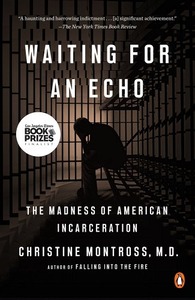
Christine Montross, Waiting For An Echo: The Madness of American Incarceration
Inpatient psychiatrist Dr. Christine Montross uses her keen eye, analytic skills, and writing talent to describe those left behind in our jails and prisons with mental illnesses. She puts a human face on the inmates she encounters. “If a man in solitary confinement feels himself slipping, feels the reality of the world around him slipping, he seeks a response to reassure him, to anchor him to the real. …Aggression and self-injury, then, are not merely about inflicting damage or garnering attention but are about seeking the most basic affirmations of the continued existence of the self.”
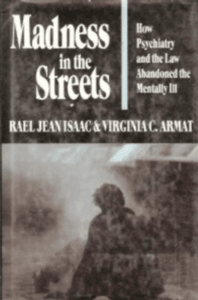
Rael Jean Isaac and Virginia C. Armat, Madness In The Streets: How Psychiatry and the Law Abandoned the Mentally Ill
Madness In The Streets offers a detailed legal explanation about how society’s good intentions in closing state hospitals in favor of community based care have gone astray. Deinstitutionalization and well-intended civil rights laws have created an environment where families and mental health providers are forced to stand by helplessly and watch as Americans with serious mental illnesses roam our streets until they exhibit signs of “imminent dangerousness,” which then causes an arrest. Those who don’t act out often “die (from neglect) with their rights on.” A ground-breaking work.
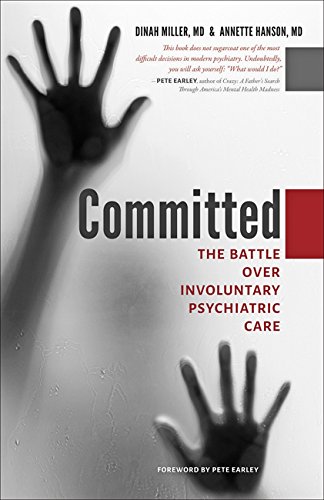
Dinah Miller and Annette Hanson, Committed: The Battle Over Involuntary Psychiatric Care
Committed examines the political battle being waged between those who oppose any form of forced psychiatric hospitalization—regardless of how sick an individual is—and those who insist involuntary commitment is often the only way to save someone who is lost in a world of delusions and paranoia. If seriously ill individuals were required by courts to accept treatment, would there be less homelessness and inappropriate incarceration—and at what cost, since studies have found that medication can help some but can harm others? A thoughtful review that includes interviews with Scientologists, who question whether mental illnesses are real, as well as parent-backed organizations that argue a “lack of insight” prevents those who are the sickest from judging what’s best for themselves.
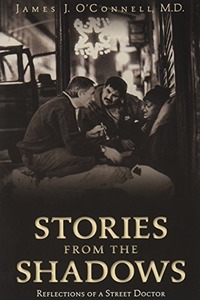
James J. O’Connell, Stories From The Shadows: Reflections of a Street Doctor
is a heartfelt, poignant account of a medical doctor’s care of the homeless, addicted and mentally ill on Boston’s streets who cycle “lost in plain sight” between the sidewalks, jails and morgues. His stories would be depressing if told by a less talented author, but Dr. O’Connell’s compassion for his patients offers us a better understanding of those we pass by each day. Dr. O’Connell learned humility early on by washing patient’s infected and swollen feet, which taught him the healing power of empathy and listening, which sometimes proves to be more of a tonic than psychotropic medications. Although Dr. O’Connell is not a journalist, the honesty of his words is much more powerful than any clever wordsmithing.
__________________________________
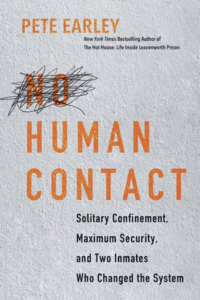
Pete Earley is the author of No Human Contact: Solitary Confinement, Maximum Security, and Two Inmates Who Changed the System, available now from Kensington Publishing Corp.
